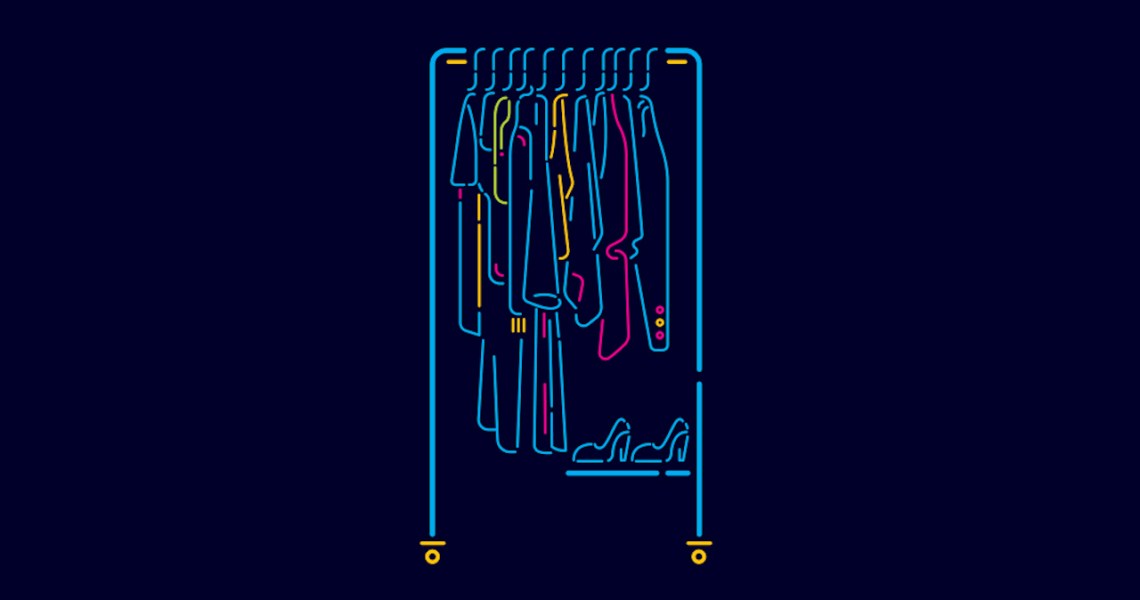Inside a 250,000-square-foot warehouse in Secaucus, New Jersey, hundreds of staffers dry, clean and make repairs to 450,000 clothing items, shipping them out to customers across the country on a daily basis. The facility, one of the largest of its kind, is Rent the Runway’s “Dream Fulfillment Center,” and is a key component for laying the groundwork of the company’s ultimate goal: Everyone will have a subscription to fashion.
Based on its growth trajectory, Rent the Runway’s aim isn’t farfetched. The company, launched in 2009 by Jennifer Hyman and Jennifer Fleiss, is fashion’s answer to the on-the-rise sharing economy, and it’s been picking up steam by answering new needs of both consumers and brands in the digital age.
Getting to know the customer — who, thanks to Instagram, values a fresh #OOTD more than ever — has largely been the fuel running the engine.
Anushka Salinas, Rent the Runway’s chief revenue officer who oversees subscriptions, says the company has 4 million data points on each of its subscription customers. More than 50 percent of customers actively provide feedback when prompted, and there are currently 1.5 million customer-provided images on the site paired with reviews of RTR looks.
“We are definitely a machine,” says Salinas. “There’s so much magic on the operations and fulfillment side of what we do; we’re such a complex logistics business.”
Inventory is the company’s No. 1 expense, says Salinas, but it has found a way to cut costs to scale faster: In mid-November, it launched a revenue-sharing program for brands, allowing them to provide rentals directly to customers through the Rent the Runway platform, versus a one-and-done transaction of buying the styles to sell via the wholesale model.
Launched in early 2016, Rent the Runway’s Unlimited subscription program, offering subscribers four styles at a time for $159 per month, has seen great growth in the last year. It gained a 150 percent boost in subscription revenue (the privately owned company does not provide specific sales figures), 125 percent more inventory and 150 new brands.
Ad position: web_incontent_pos1
“We use the data we have to tailor our assortment for customers,” says Sarah Tam, Rent the Runway’s chief merchant officer. “That includes working with current brands to fine-tune the selection but also identifying voids in the inventory, which often results in layering on new brands. We tested denim in maternity, then launched 85 styles [in the main line] for fall, and we’re adding another 45 styles for spring — and we’re bringing on denim brands like 3×1 to meet that demand.”
As the company considers expanding assortment based on “anything she could need to fit her lifestyle,” Tam says that may soon include categories like hair tools and skin-care gadgets.
“We’re focused on normalizing the behavior of renting fashion,” says Salinas. “We want to continue to make our subscription to fashion so incredible and amazing that she could never imagine not having it.”
Hyman and Fleiss started fundraising while at Harvard Business School and have so far raised $400 million in capital. The company’s latest round, $20 million in March by Alibaba’s Jack Ma and Joe Tsai, raised its valuation to nearly $800 million, increasing speculation that it will soon go public, which would bring new pressure.
“Businesses change when they IPO,” says Syama Meagher, chief retail strategist at Scaling Retail. “Management and operations have a tremendous amount of pressure to scale, and the Rent the Runway infrastructure undoubtedly has scalability concerns. Building partnerships and operations globally will be a tremendous feat for the company, but one that will secure its trajectory.”
Ad position: web_incontent_pos2
To win over customers with available styles, the company had to first show the value to brands, which were at first concerned about cannibalizing their own businesses by making styles available to wear for 5-10 percent of their retail price. The value for many is exposure to the millennial customer they’re seeking (as was the draw for high-fashion designers Jason Wu and Prabal Gurung), and a chance to earn back market share from comparably priced fast-fashion brands. Some also use Rent the Runway as a test bed for new markets and categories, like French brand Bash, which used it to grow in the U.S. market.
“A lot of people said it would be difficult to launch in the U.S.,” says Sarah Benady, CEO of Bash North America. “When you don’t know a brand, it’s super safe to rent it, try it and see if you like the product and the fit.”
As growth remains the focus, physical expansion is top of mind: Rent the Runway recently partnered with WeWork to offer customers more drop-off locations. In 2019, it’s opening a new distribution facility in Dallas, enabling faster delivery across the U.S. Global expansion will follow.
“You’re definitely going to see more of us in more places,” says Salinas. “We’re going to be able to take the experience New Yorkers get and scale that in every single city, very soon.”


